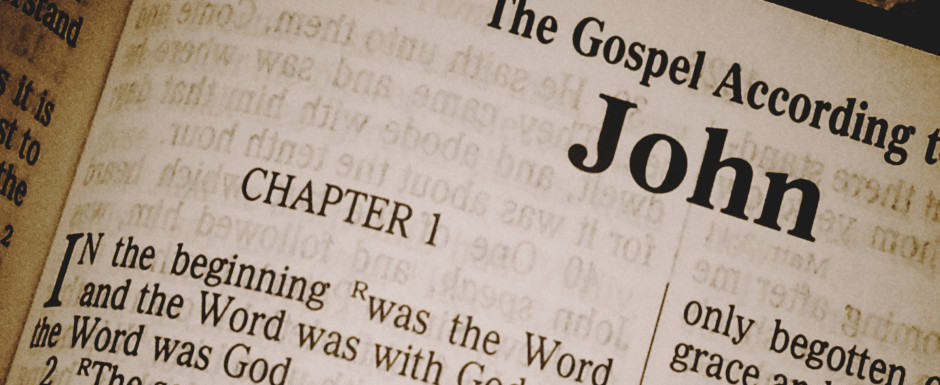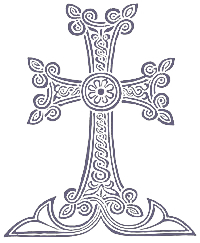Fourth Sunday After Pentecost

THE SUNDAY MESSENGER
July 7, 2019
Fourth Sunday After Pentecost
DIVINE LITURGY CELEBRANT today, we welcome as Celebrant of the Divine Liturgy, The Rev. Fr. Norayr Kazazian. Orhnya Der, yev Paree Yegak.
The Final Years of St. Gregory and the Discovery of His Relics
As St. Gregory grew old and became more involved in solitary life, King Drtad asked him to ordain his younger son Arisdagés a bishop, and to take him on as Gregory’s assistant. Gregory had already retired by a.d. 325, when the Holy Council of Nicaea took place, and he sent his son Arisdagés in his place to participate in this first ecumenical gathering of bishops of the Christian Church. In his retired state, however, Gregory continued his pastoral work by preaching and writing homilies, employing a simple language so that people could understand.
St. Gregory’s favorite spot as a solitary was a site called “the Caves of Mané,” located on Mount Sebuh near Erzinjan, now in eastern Turkey. This place had previously been the residence of the Virgin Mané, one of St. Hripsimé’s companions. It is unclear how long St. Gregory lived there, and when exactly he died. After some time had elapsed, shepherds chanced upon his body and buried him at the spot where they found him, not knowing who he was.
During the fifth century, a hermit named Karnig was guided by a vision to the grave of the saint and discovered his relics. It was customary in those days to distribute relics of saints to various churches in different parts, and it seems that the same practice was implemented in St. Gregory’s case. Karnig took the body of the saint to the village of Tortan, located to the east of Mount Sebuh, and buried some of the relics there; the rest were taken elsewhere. On or near St. Gregory’s unmarked grave there stood a church, built at a later time and still extant in 1915. The exact site of St. Gregory’s grave in Tortan was not known even to visitors in the tenth century; but nine other graves existed inside the church, and were said to belong to King Drtad, his queen Ashkhén, his sister Khosrovitukhd, and other members of St. Gregory’s family. These were still extant as late as 1915.
The remaining relics of St. Gregory were later taken to the Monastery of St. John the Baptist in Pakavan, where St. Gregory had baptized King Drtad and the Armenian people in the Aradzani River. The relics were kept in a box and taken out on important occasions. In a.d. 450, when a rumor arose in Armenia that St. Vartan and the Armenian magnates had accepted the Persian religion during their visit to Persia’s royal court, the returning magnates were met by a gathering of priests, noblemen and common people, who held forth the box of St. Gregory’s relics as a reminder of their Christian roots. Similar incidents occurred at times of turmoil and joy.
The relics of St. Gregory were later taken and laid beneath the massive columns of the Holy Zvartnots Church, whose ruins are still visible near the airport of Yerevan. The saint’s skull was kept separately in a box. At some point the skull was transferred to the West and is now kept in the church of St. Gregory the Armenian in Naples, Italy. (Some other relics of St. Gregory deposited in that location were recently transferred to the Armenian Church by the Roman Catholic Church, as a tribute to the 1700th anniversary of Armenia’s conversion to Christianity.) Today, relics of St. Gregory may be found at Holy Etchmiadzin, Holy Jerusalem and Antilias. The relic at Holy Etchmiadzin, encased in an arm-shaped reliquary, is used to bless the Holy Chrism (Muron) once every seven years. It is on display in the treasury of the Holy See.
In the calendar of the Armenian Church, the discovery of the relics of St. Gregory is an important feast and is commemorated on the Saturday before the Fourth Sunday after Pentecost. King Drtad, Queen Ashkhén and Princess Khosrovitukhd were originally commemorated on the Monday following the Fifth Sunday after Pentecost, but since the calendrical revision of Catholicos Simeon in 1774-75, that feast falls on the Saturday following the Fourth Sunday after Pentecost.
King Drtad, Queen Ashkhén and Princess Khosrovitukhd are regarded as saints of the Armenian Church because of their role in the conversion and spread of Christianity in Armenia. It is obvious that St. Gregory could not have succeeded in his mission without help from the royal family. It is also important to note that from the very beginning, there was lay participation in the founding and administration of the Armenian Church. While St. Gregory serves as an example of a fatherly figure for all Armenians, King Drtad, Queen Ashkhén and Princess Khosrovitukhd stand out as the forerunners of lay benefactors. The church cannot function only with priests and bishops. Without lay participation very little is achieved. No matter what our station in life, we must make ourselves humble before God and do our share to achieve Christ’s mission.
TODAY’S BIBLE READINGS:
Romans 7: 25-8:11 (page 143) New Testament
Matthew 12: 38-45 (page 12) New Testament – (Please follow the Armenian Reading in your Bible)
Isaiah 1:21-31 (page 683) Old Testament
REQUIEM SERVICES: Hokehankist today will be for:
MANUEL COOK (1ST Anniversary of His eternal life) requested by Emily Movsesian.
“Let my prayer be counted as incense before you, and the lifting up of my hands as an evening sacrifice” (Psalm 141:2). Please pray for Merle Santerian, Armen Mirakian, Steve Hovnanian, Alice Charles, Pearl Jamgochian and Ani Navasartian for improved health and to feel God’s healing presence in their lives. Pray also for Der Hakob and his family and our church family of forty, for their safety and well-being as they embark on a pilgrimage to Armenia, departing on June 24.
THE SUMMER COFFEE HOUR is upon us and can only happen with faithful support from those who enjoy it, meaning different people volunteering each week to set it up and clean up afterward. Coffee will continue to be provided and bagels will be brought in whenever possible. We will depend on our parishioners to supply the “Pot Luck” refreshments each week. Please give serious consideration to volunteering your manpower which will enable us to continue providing this fellowship time that everyone enjoys so much. Call the church office and let Maggie know the Sunday that you would like to volunteer. It will be greatly appreciated.
NEW COMMUNION PROCEDURE – Before gathering for confession, please allow time for the Choir Members to come down and join us before we begin.
Did you know that when we participate in Soorp Badarak (Divine Liturgy), we are also being invited to a meal (communion) offered by our Lord and Savior, Jesus Christ. As such, we should dress in a manner worthy of that invitation. We ask our faithful to dress appropriately for worship. Please, no very short dresses, shorts or bare shoulders. Thank you.
ATTENTION GRADUATES – The August issue of the Looys will feature information about all graduates and we look forward to including all of our graduates at any level. Write-up should include: full name, parents’ names, name of institution, grade level or degree achieved, activity involvement, and future plans (further education/ work). Please include a picture (in high resolution color), if desired. To be included, everything must be sent to looys@holytrinity-pa.org no later than July 21st.
2019 Attendance: Plate/Candle Collection:
June
2 – 95 people $385.00
9 – 57 people $221.00
16 – 61 people $432.00
23 – 64 people $355.00
30 – 31 people $126.00
Weekly Expenses: $6,000.00
CHURCH CALENDAR (please mark your calendars)
July
July 7th – Guest Celebrant: Rev. Fr. Norayr Kazazian
July 14th – Guest Celebrant: Rev. Fr. Norayr Kazazian
July 21st – Deacon Service
July 28th – Feast of TransfigurationAugust
August 18th – Feast of the AssumptionSeptember
Saturday September 28th – Fall Into Philly Kef @ Holy Trinity
Using the Pew Book: In order to enrich understanding of the Divine Liturgy, we encourage our faithful to follow along in the large two-part Pew Book. Part One includes the classical Armenian used in the Liturgy; the facing page is the translation in modern Western Armenian. Part Two contains the transliteration of the classical Armenian; the right-hand page has the English translation. This Pew Book includes the prayers of the celebrant usually offered inaudibly. The prayers offered aloud are indicated in boldface type.
THE NICENE CREED/ HAVADAMK – This is the Profession of our Faith which is recited every Sunday moments after the Gospel is read from the altar. Sometimes it is sung, but more often it is recited by the Deacons and/or the Choir. We invite you to affirm your own “Profession of Faith” by reciting along with us. God longs for all of us to express our faith and devotion to Him.
THE KISS OF PEACE: After the gifts of the Eucharist are brought to the Altar Table, the deacon proclaims, “Greet one another with a holy kiss.” The person giving the greetings says, Kristos ee mech mer Haydnetsav – Christ is revealed amongst us. The recipient would respond, Orhnial eh Haydnootiunun Kristosee – Blessed is the revelation of Christ.
Anyone who wishes to request any Requiem Services MUST inform the office by 1:30pm Wednesday the week before. If you also want to sponsor the Fellowship Hour you MUST call Merle Santerian at 215-947-3777.
Would you like to:
– receive this Bulletin on Friday via email?
– request a Hokehankist, house blessing or hall rental information?
– find in-depth information on our faith, our parish and our activities?
– sign up for an event online?
If the answer to any of these questions is YES, please visit our parish website at www.holytrinity-pa.org
WE ASK THAT EVERYONE KINDLY TURN OFF ALL CELL PHONES and all other such electronic devices prior to entering the sanctuary out of respect for the sanctity of our services.

